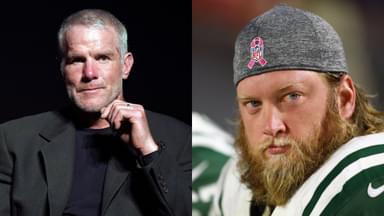Following 16 years as Mr. Packer, Brett Favre was pushed out of Green Bay in 2008 to make room for Aaron Rodgers. After going from the Pack to the New York Jets (sound familiar?), Favre joined Green Bay’s bitterest NFC North rivals—the Minnesota Vikings—in 2009. In his first trip back to legendary Lambeau Field in Week 8 of the 2009 NFL season, Favre put forth a performance that has gone down as one of the greatest revenge games in NFL history.
Advertisement
Favre threw four TDs in what ended as a resounding 38-26 victory for the returning conqueror. 15 years on from that fateful day, and Favre finally felt comfortable discussing what would have surely been a very complicated day for him emotionally.
“That was an emotional game. I loved the Packers organization but had a job to do for the Vikings. Let me just say — both fan groups are fantastic,” the former quarterback wrote on X.
That was an emotional game.
I loved the Packers organization but had a job to do for the Vikings.
Let me just say — both fan groups are fantastic. https://t.co/qZepYZvRbJ
— Brett Favre (@BrettFavre) December 3, 2024
Favre went 17-for-28 for 244 yards on the day, posting a lovely 128.6 passer rating in the process. Not to be outdone, Favre’s successor in Green Bay, Rodgers, went 26-for-41 for 287 yards and two TDs of his own.
However, Rodgers and company were out of their depth. The Vikings took the lead late in the 1st quarter on a 1-yard Adrian Peterson TD and never trailed again. They went up 24-3 at one point, though Rodgers did claw back to make it somewhat of a contest late on.
That one meant more because Favre did it in front of the Green Bay fans, the Cheeseheads, and at his old stomping grounds at Lambeau. However, it wasn’t his first meeting with his old employer that year. In Week 4, in a much less emotional environment at Minnesota’s Metrodome, Favre threw for 271 yards and three TDs with a 77 completion percentage. The Vikes won that one too, 30-23.
In the end, the Packers were not too shabby in the third year of the Rodgers era. They went 11-5 but lost a thriller to the Arizona Cardinals in their Wild Card game.
The 12-4 Vikings, on the other hand, went on to have their best season since 1998. However, they fell just one unconscionable (but sadly, not uncharacteristic) Favre interception short of their first Super Bowl appearance since 1976. Favre’s play dramatically declined the following year with the Vikings, after which he announced his retirement.
Though, that wasn’t Brett Favre’s first time retiring. He had previously formally announced his retirement in March 2008. However, it was later revealed that Favre had been pressured to do so by the Packers, who no longer believed in the aging QB’s talent and wanted to see what they had in Aaron Rodgers.
When Favre said he wanted to come back to Green Bay, they weren’t warm to the idea. However, when Favre asked for his unconditional release so he could join another team, the Packers denied him. In the end, after some ugly business back and forth that included possible bribes and tampering violations, Favre was reinstated and allowed to find a new employer.
It was a sad way to end a tenure like Brett Favre had in Green Bay. He made his first start for the Packers in Week 4 of the 1992 season. He then went on to 252 more consecutive starts thereafter. He won three consecutive MVPs from 1995 to 1997, and in 1996, he led the Packers to their first Super Bowl title in 30 years.
While most have since been eclipsed, when Favre retired after the 2010 season, he owned nearly every worthwhile QB record in the book—including most TD passes and most interceptions, a dichotomy that characterized his gunslinger mentality throughout his time in the NFL.








